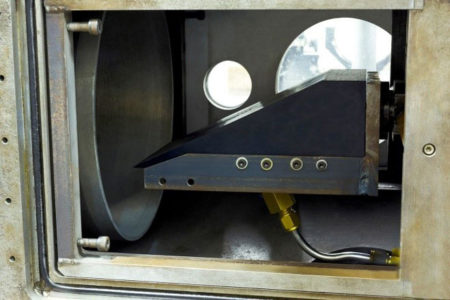The Stratasys 3D printing solutions are being used for the production of aircraft models and hypersonic engine prototypes for feasibility projects, including shock tunnel testing for aerospace flights, especially useful for putting payloads (satellites) into space. These prototypes employ unique geometries, curvatures and concavities that must be produced without seams to pass rigorous laboratory tests that check speed, temperature, pressure and other parameters. The Fortus 900mc’s robust and reliable FDM 3D printing technology produces large, complex parts with high precision to meet the IEAv’s strict requirements.
“Using Stratasys 3D printing, we can now improve and expand our research productivity due to the flexibility it provides, and the way it enables us to optimize our resources,” said Dr. Rego.
Before implementing Stratasys 3D printing at the IEAv, models were designed and machined (a process that could take up to six months) using conventional manufacturing techniques. Incorporating design changes after aerospace feasibility tests caused long delays, in many cases. Now with 3D printing, complex parts and prototypes are available for testing within a week of their design.
Keep up to date with how 3D printing is becoming an integral part of the aerospace and defense industries by joining the Stratasys Aerospace Innovation Series.
“Stratasys 3D printing enables the IEAv to carry out thorough experiments with 3D printed prototypes, submitting them to thermal and mechanical loads in order to obtain reliable aerothermodynamic data,” said Dr. Rego. According to IEAv researchers, the institution is now starting to test hybrid models (3D prototypes with simple coupled materials and/or metal parts) to expand the strength and efficiency of certain devices.
“This new form of prototyping with 3D printing is giving us greater flexibility, reliability and speed, at a significantly lower cost. 3D printing technology is redefining our laboratory limits, opening up new possibilities and aspects of research. In addition, we gain the added benefit of ensuring the secrecy of our innovations and the security of the aerospace and defense projects that we develop,” said Dr. Antonio Carlos de Oliveira, senior researcher at the IEAv and FINEP research project manager.
Follow the Stratasys Aerospace Showcase on LinkedIn
Wilson do Amaral Neto, application engineer for Brazilian Stratasys reseller SKA, believes the Stratasys Fortus 900mc Production 3D Printer will enable the IEAv to obtain significant gains in terms of product and process improvement, similar to those of Airbus and NASA. “Research centers, as well as Brazilian industry, can rely on the same modern technologies to create more elaborate and process designs faster and more accurately, using 3D printing processes with advanced materials, such as ABS, Nylon 12, polycarbonate, and even ULTEM.”
“We were honored to provide an industrial 3D printer and materials solution to assist in cutting edge aerospace research projects by the Brazilian Air Force. I believe that the development of this project will bring great benefits to the country and that, in accordance with global quality standards, this will be another reference point for 3D printing’s potential impact for the global aerospace sector,” said Paulo Farias, Director of Sales, Stratasys Brazil.


